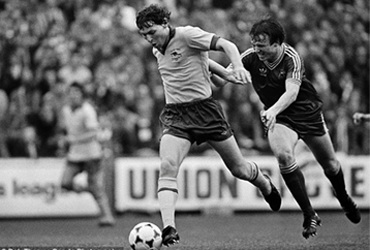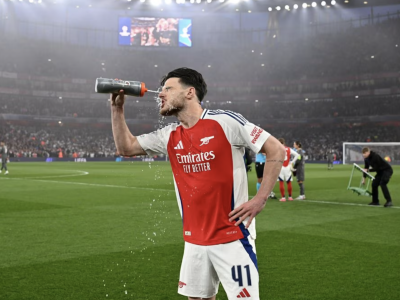In 1851, at the height of Britain’s industrial power, Prince Albert – the husband of Queen Victoria – had a hand in the creation of what came to be known as ‘The Great Exhibition of the Works of Industry of all Nations’ (or ‘Great Exhibition’ for short), with the purpose of impressing the world with Britain's industrial achievements. It was held in London’s Hyde Park within a huge temporary glass structure (on the committee overseeing its construction had been the famed Isambard Kingdom Brunel) which was constructed within nine months and came to be known as the ‘Crystal Palace’. The exhibition ran for six months and, once it was over, the structure was moved and reconstructed in an area south of the Thames then known as Penge Place Estate near Sydenham Hill, but now referred to as Crystal Palace Park – which was opened to the public by Queen Victoria in 1854.
The reconstructed Crystal Palace became an exhibition centre (in essence, the world's first theme park) providing displays, festivals, music shows, a rollercoaster, dinosaur models and London County Cricket club matches which attracted over two million visitors a year. The groundskeepers of Crystal Palace Park in 1861 formed their own football side – Crystal Palace FC - and became one of twelve founder members of the Football Association two years later, competing in the inaugural FA Cup competition in 1871/72 though eliminated by the Royal Engineers in the Semi-finals. The side competed in a further four FA Cups, however were disbanded in 1876. Two decades on, the grounds of Crystal Palace Park would continue its links with football, becoming the second regular host venue of the FA Cup Final after Kennington Oval in 1895. The most attended final during the Crystal Palace years would be the 1901 final involving that lot from the other end of the Seven Sisters, which brought an attendance of 110,820
One major downfall of Crystal Palace Park however was that its sheer size meant it was impossible to maintain financially and it began to fall into financial ruin. In 1905, one proposed solution to the financial black hole that was emerging was the creation of a football club which would play on the grounds of the park and thus, a reprised Crystal Palace FC was formed. The grounds of the park played host to both Crystal Palace FC and the FA Cup Final until 1914, when the outbreak of the First World War meant that the grounds were commandeered by the Admiralty and both were evicted as a result. After a period of playing their home games at the site of the Herne Hill Velodrome, on the disbanding of former professional side Croydon Common FC, Crystal Palace moved to the Selhurst area of South London in 1918 where they’ve remained ever since.
Palace joined the Football League in 1920, however didn’t reach the top flight until as late as 1969/70, hence why the first ever league fixture between Crystal Palace and Arsenal didn’t take place until November 1969 at Selhurst Park. Both sides were struggling in the League at the time, but it was Arsenal who ran out 5-1 winners. The following season was to be Arsenal’s double year, on their way to glory Arsenal picked up the points in a 2-0 win at Selhurst Park, with goals from George Graham and John Sammels. In 1971/72, Palace picked up their first league point at home to Arsenal in a 2-2 draw and the fixture at Selhurst Park in the final season of Palace’s first spell in the top flight – 1972/73 - ended with a 3-2 win for Arsenal in October 1972.
Toward the end of that season, Malcolm Allison, ousted from the hot seat at Manchester City, took up the vacant managerial post at Selhurst Park. Under ‘Big Malc’ however Palace dropped two divisions to the third tier by 1974. It was under Allison in the old third division however that Palace went all the way to the Semi Finals of the FA Cup in 1976, beating Leeds United and Chelsea along the way before losing to that year’s eventual winners, Southampton. The Cup run wasn’t enough for Allison to keep his job, particularly after being photographed in the team bath with soft porn star Fiona Richmond (the incident highlighted here in an article which I wrote on Malcolm’s passing in 2010) and in the summer of ’76, he was sacked by Palace.
He was replaced by Terry Venables, who got Palace promoted at the first attempt in 1976/77 and again to the top flight in 1978/79, the latter secured with a win in their final match against Burnley. Arsenal fans would also owe Venables a debt of gratitude on two fronts. Firstly, Tel gave his old friend George Graham his first crack at coaching at Palace, after playing out his last years at Selhurst Park (getting sent off here against Stoke City in 1977). Arsenal were of course to reap the full benefit of GG at his managerial peak during the late eighties and early nineties. However the Gunners would reap the more immediate benefit of Palace youth product Kenny Sansom.
Here’s Kenny interviewed on The Big Match on Crystal Palace virtually securing promotion against Orient, his international call-up and having to delay his impending honeymoon to tour with the England side over the summer. Kenny was part of a young side dubbed rather un-Nostra Damus like as the ‘Team of the Eighties’ after winning back to back FA Youth Cups in 1977 and 1978. Palace started their return to the top flight promisingly enough, even topping the table at the end of September. In November 1979 Palace scored their first league victory over Arsenal in a 1-0 win at Selhurst Park, however dropped to thirteenth position, though still their highest ever finish at that point.
Kenny signed for Arsenal in August 1980, with ITN footage of Sansom here entering the Marble Halls at Highbury. The deal which took him to Arsenal however was one of the most bizarre ever and involved nineteen year old recent close-season signing Clive Allen from QPR going in the other direction to Crystal Palace. Contrary to popular belief, Allen did make an appearance for Arsenal - three in fact. One at Rangers as this article states, one at Aberdeen as the picture at the top of this article shows, the third against either Vasco Da Gama or Partizan Belgrade.
What made the deal out of the ordinary was that Arsenal paid £1.25 million, making Allen the first £1 million teenager (only sixteen months after Trevor Francis became Britain’s first seven figure transfer). He’d also scored thirty two goals in forty nine games at Loftus Road, albeit in the second tier. A theory behind the transfer is that Palace wanted Allen but QPR wouldn't sell to Venables. The official explanation however is that Clive Allen failed to impress in his short spell at Arsenal, though after Frank Stapleton left the following year and his replacements Ray Hankin, John Hawley and Lee Chapman were seriously underwhelming, it could be tempting to conclude it was a wrong move for Arsenal.
The signing of Kenny Sansom however was a masterstroke by Terry Neill. Sansom went on to be such an ever present for Arsenal and England that I doubt few actually knew who his understudy left back for either role was until Stuart Pearce and Nigel Winterburn emerged in the late eighties. However, as seen from this interview with Thames News in 1984, clues to his eventual downfall were there early on. As for Allen, he went on to be Palace’s top striker the following season, though famously robbed of a goal here against Coventry City. His time at Palace lasted just one season after the Eagles were relegated (finishing bottom of the old First Division) and ironically returning to QPR with Terry Venables, now installed as boss at Loftus Road. (Clive obviously later became a bigger success at the other end of the Seven Sisters Road, scoring forty nine goals for Tottenham in 1986/87).
Terry Venables had quit Selhurst Park after losing nine of his first ten games. Replacing him in the hot seat was Malcolm Allison for a disastrous two month stint, encapsulated here in the documentary ‘City’ where Palace were thumped 5-0 on his return to Maine Road, ousted by Peter Swales just months prior. The one and only fixture between Palace and Arsenal at Selhurst Park during the 1980s ended in a 2-2 draw on Boxing Day of 1980, with goals from Brian McDermott and Frank Stapleton. As the eighties progressed, both Palace and Malcolm Allison drifted into obscurity, however in the same year as their relegation to the second tier Palace would attain a moment of great cultural significance as a Crystal Palace scarf clearly appears hanging up at the Trotters’ flat throughout the first series of Only Fools and Horses in 1981 – as seen here in the first episode @04.50.
Undoubtedly, in 1981 Arsenal fan and creator of the series - John Sullivan - obviously thought that Delboy would identify with Terry Venables and Malcolm Allison over at Selhurst Park, however as the series progressed Grandad mentions that Delboy’s Dad proclaimed that one day Millwall would win the Cup, on his wedding day it was revealed that the clearly embarrassed Rodney Trotter was named after Charlton Athletic, but in the 1986 Christmas special also was planning to take the Duke of Maylebury’s daughter to watch a game at Stamford Bridge. So quite who the Trotter clan actually supported is anyone’s guess.
One celebrity fan that Crystal Palace did attain however was Radio One DJ and Top of the Pops presenter David ‘Kid’ Jensen , who reveals here that he defected to Crystal Palace some time during the 1980s after being a QPR fan during the 1970s. However, as the 1980s drew to a close – as will be seen tomorrow - there would be a return to the big time again for the Palace, which briefly eclipsed even Venables and Allison’s achievements in the 1970s.
Part two follows tomorrow
*Follow me on Twitter@robert_exley







